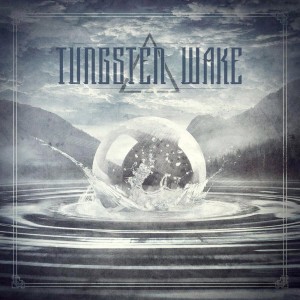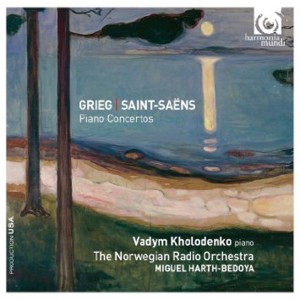Tungsten Wake’s Tungsten Wake
As I plunged my brain ears-first into the crystal-clear heavy alt-rock world shimmering inside Tungsten Wake’s six-song eponymous debut, it occurred to me that it’s not often you hear funk bass in a rock band.
The Granbury quartet’s rhythm section of bassist Terry Pricer and drummer Doug Grossnickle is earnest, tricky, and tight, propelling the record forward like the silvery, mystical galleon on the cover over sonic seas churned by storms of Southern-rock soloing and brainy, loping time signatures. All the while, singer/guitarist Jason Warner’s vocals soar to the forefront, as he and fellow guitarist Quinn Peacock grind out chunky riffs. In parts, the music is engaging and engrossing. Other times, TW’s members’ undeniable proficiency becomes a little distracting, not because of cheesy hot lixxx or basslines that have had the taste spanked out of them, but because it points out the band’s influences so glaringly. They might as well have John Madden highlight them with yellow circles and arrows.
Making obvious nods to inspirational precursors isn’t at all a crime, as long as a band still sounds like its own thing. Tungsten Wake, however, is almost too all-over the place. Several songs (“Denials” and “Mind Your Time,” in particular) warrant comparison to the sinewy grooves and unsettling guitar crunch of Tool’s first couple of albums. Others (“Denials” again and “The Black Stone”) sound informed by Mastodon’s post-Blood Mountain output. Then there’s the proggy boogie of “Hang On,” which reminds me of a Sword song if J.D. Cronise had never thumbed through issues of Heavy Metal.
Throughout, Warner’s voice hovers like a ghost in front of your face, mixed to sound like a vocal description found in an encyclopedia about Pink Floyd. By the time closing track “Shooting Fish in the Barrel” moves from a brief flirtation with psychedelic rock into bouncy, percussive funk metal, I sort of felt like I’d listened to a compilation.
But even if Tungsten Wake seems to visit nearly every corner of the heavy alternative map, there’s a lot to like here: fun solos, challenging rhythmic textures, and hooks that are hard to duck. With the careful arrangements decorated with topical, positivist lyrics (a line in “Hang On” laments “young men dying in Afghanistan”), Tungsten Wake has wide appeal, like a successful quarterback sneak replayed and tracked in glorious, telestrator yellow. –– Steve Steward
Mountain Kid’s The Realist
I don’t know. Maybe prog rock simply isn’t for me. Or, since this paper gave a glowing write-up to Mountain Kid’s live show last month (“Concert Review: Mountain Kid at Lola’s Saloon,” July 15), maybe I just had to be there. Maybe they’re one of those bands that’s much better live than they are on recording. They’ve certainly got the chops, as well as the pedigree –– drummer Ethan Stone and co-frontman Lewis Wall are from Head of Savage, while guitarist Josiah Hunter and co-frontman Addison White are from The Royal Savages. Whatever it is, The Realist didn’t do much for me.
Recorded at Green Audio Productions with owner/producer Ben Napier (Sally Majestic, Panic Volcanic, Droidekka), the band’s new EP is reportedly the first of two, with the other slated to come out soon. I’m not familiar with the musicians’ work as members of the previous groups, but I heard a lot of aimless noodling and fussy production work on The Realist. “Feet First” has a stomping rhythm that probably explains why it works in live performance, but the recording has a puzzling 10-second pause in the middle and an ending with a lot of guitar feedback and keyboard configurations. This song would have had much more impact at three minutes in length instead of five.
Opening track “Monotony” clocks in at three-and-a-half minutes and has some surf-rock guitars, but it’s still plagued by rhythm changes and effects inserted for their own sake. The breezy closing track, “Amnesiawake,” shows off the group to its best advantage, with its sun-kissed guitars and backing vocals that drift off into unexpectedly eerie harmonies. The contrast between the song’s placid surface and its troubled interior was gently disturbing, and it pointed toward a possible direction for this Fort Worth band. –– Kristian Lin
Kholodenko and Harth-Bedoya’s
Grieg/Saint-Saëns Piano Concertos
This album certainly has international flair: Peru native Miguel Harth-Bedoya, Ukrainian pianist Vadym Kholodenko, the Norwegian Radio Orchestra, the independent French label Harmonia mundi, and piano concertos by Grieg/Saint-Saëns. But the heart of this thing lies firmly in Fort Worth.
After winning the gold medal at the 14th International Van Cliburn Piano Competition, Kholodenko began collaborating with Fort Worth Symphony Orchestra music director Harth-Bedoya, who is also chief conductor of the Norwegian Radio Orchestra.
The album highlights two popular and widely performed concertos. Grieg’s melancholic temperament pulls heavily from the folk traditions of his native Norway while the great French composer Saint-Saëns’ muscular work epitomizes the height of Romantic-era writing.
Harth-Bedoya and Kholodenko set the tone for the album with the first few bars of the first movement. The tempo pushes the allegro molto moderato limit without breaking it. The piano, acoustically, is balanced well against the orchestra. (A credit to the sound engineers, since the pianos never stand out as much during live performances.) The orchestra swells and ebbs with deep breaths of sonorous beauty.
Possibly the most spectacular example of pianistic virtuosity of the entire album occurs during the first movement’s cadenza. Beyond crystal-clear runs and trills, Kholodenko demonstrates a deep understanding of how to patiently build the solo section to a rousing climax when the main theme returns in a dense layer of chords and chromatic scale runs.
Concertos do not lend many opportunities for pianists to play free from the restraints of the orchestra, but the soloist did not miss the opening line of the gorgeous second movement. Kholodenko strums the opening trill-like figures without a sense of urgency and with the mood of someone caught in the midst of a daydream only to be slowly lulled out of that trancelike state by the orchestra.
The Saint-Saëns concerto offers fewer moments of revelation, but the performances are solid. It is noteworthy to hear Kholodenko’s extensive chamber music background come to the fore in the first movement. There are several instances when piano and orchestra appear to be competing as they swell upward but only to have the piano take a lighter touch at the crest of the crescendo, thereby creating a more interesting interplay between the parts. –– Edward Brown
















At this time this band performance is peaks i like this new album.